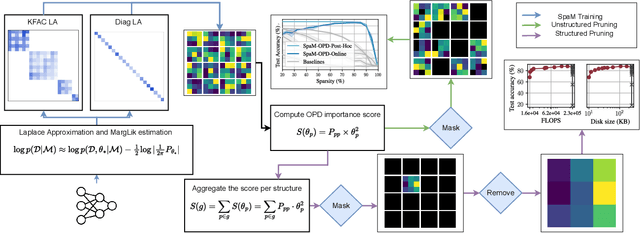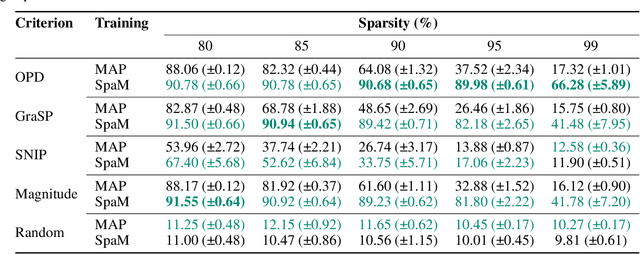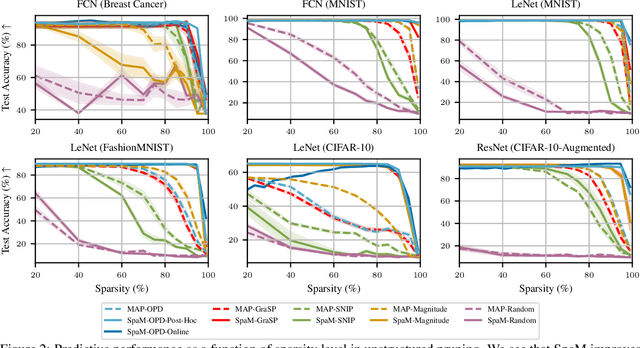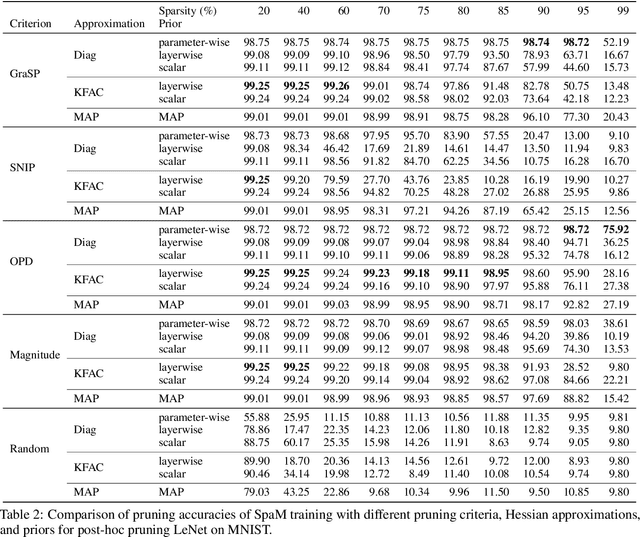Betrand Charpentier
Shaving Weights with Occam's Razor: Bayesian Sparsification for Neural Networks Using the Marginal Likelihood
Feb 25, 2024



Abstract:Neural network sparsification is a promising avenue to save computational time and memory costs, especially in an age where many successful AI models are becoming too large to na\"ively deploy on consumer hardware. While much work has focused on different weight pruning criteria, the overall sparsifiability of the network, i.e., its capacity to be pruned without quality loss, has often been overlooked. We present Sparsifiability via the Marginal likelihood (SpaM), a pruning framework that highlights the effectiveness of using the Bayesian marginal likelihood in conjunction with sparsity-inducing priors for making neural networks more sparsifiable. Our approach implements an automatic Occam's razor that selects the most sparsifiable model that still explains the data well, both for structured and unstructured sparsification. In addition, we demonstrate that the pre-computed posterior Hessian approximation used in the Laplace approximation can be re-used to define a cheap pruning criterion, which outperforms many existing (more expensive) approaches. We demonstrate the effectiveness of our framework, especially at high sparsity levels, across a range of different neural network architectures and datasets.
 Add to Chrome
Add to Chrome Add to Firefox
Add to Firefox Add to Edge
Add to Edge